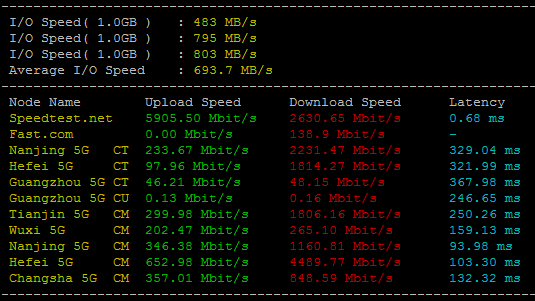declare styleableandroid自定义控件怎么用
declare styleable 时间:2022-02-27 阅读:()
android cardview 怎么用
CardView是安卓5.0的新控件,这控件其实就是一个卡片,当然我们自己也完全可以定义这样一个卡片,从现在的App中可以看到各式各样的自定义卡片,所以这个控件意义不是很大。support中的view所以使用在布局里面的时候一下子看不到效果的,比较不好。CardView继承的是FrameLayout,所以摆放内部控件的时候需要注意一下。 用代码来进行参数说明: <resources> <declare-styleable name="CardView"> <!-- Background color for CardView. --> <!-- 背景色 --> <attr name="cardBackgroundColor" format="color" /> <!-- Corner radius for CardView. --> <!-- 边缘弧度数 --> <attr name="cardCornerRadius" format="dimension" /> <!-- Elevation for CardView. --> <!-- 高度 --> <attr name="cardElevation" format="dimension" /> <!-- Maximum Elevation for CardView. --> <!-- 最大高度 --> <attr name="cardMaxElevation" format="dimension" /> <!-- Add padding in API v21+ as well to have the same measurements with previous versions. --> <!-- 设置内边距,v21+的版本和之前的版本仍旧具有一样的计算方式 --> <attr name="cardUseCompatPadding" format="boolean" /> <!-- Add padding to CardView on v20 and before to prevent intersections between the Card content and rounded corners. --> <!-- 在v20和之前的版本中添加内边距,这个属性是为了防止卡片内容和边角的重叠 --> <attr name="cardPreventCornerOverlap" format="boolean" /> <!-- 下面是卡片边界距离内部的距离--> <!-- Inner padding between the edges of the Card and children of the CardView. --> <attr name="contentPadding" format="dimension" /> <!-- Inner padding between the left edge of the Card and children of the CardView. --> <attr name="contentPaddingLeft" format="dimension" /> <!-- Inner padding between the right edge of the Card and children of the CardView. --> <attr name="contentPaddingRight" format="dimension" /> <!-- Inner padding between edge of the Card and children of the CardView. --> <attr name="contentPaddingTop" format="dimension" /> <!-- Inner padding between the bottom edge of the Card and children of the CardView. --> <attr name="contentPaddingBottom" format="dimension" /> </declare-styleable> </resources> 看完了参数,那么我们来看看布局文件中的用法。 <!-- A CardView that contains a TextView --> <android.support.v7.widget.CardView xmlns:android="/apk/res/android" xmlns:tools="/tools" xmlns:app="/apk/res-auto" android:id="@+id/card_view" android:layout_width="200dp" android:layout_height="200dp" android:layout_gravity="center" app:cardCornerRadius="4dp" app:cardBackgroundColor="#ff0000" app:cardElevation="5dp" app:cardMaxElevation="10dp" app:cardUseCompatPadding="true" app:cardPreventCornerOverlap="true"> <TextView android:id="@+id/info_text" android:layout_width="match_parent" android:layout_height="match_parent" android:layout_gravity="center" android:textSize="25sp" android:textColor="#ffffff" android:text="Hello CardView"/> </android.support.v7.widget.CardView> 以上就是详细使用说明。 这样我们就定义好了一个CardView了。android自定义控件怎么用
一、控件自定义属性介绍 以下示例中代码均在values/attrs.xml 中定义,属性均可随意命名。 1. reference:参考某一资源ID。 示例: <declare-styleable name = "名称"> <attr name = "background" format = "reference" /> <attr name = "src" format = "reference" /> </declare-styleable> 2. color:颜色值。 示例: <declare-styleable name = "名称"> <attr name = "textColor" format = "color" /> </declare-styleable> 3. boolean:布尔值。 示例: <declare-styleable name = "名称"> <attr name = "focusable" format = "boolean" /> </declare-styleable> 4. dimension:尺寸值。 示例: <declare-styleable name = "名称"> <attr name = "layout_width" format = "dimension" /> </declare-styleable> 5. float:浮点值。 示例: <declare-styleable name = "名称"> <attr name = "fromAlpha" format = "float" /> <attr name = "toAlpha" format = "float" /> </declare-styleable> 6. integer:整型值。 示例: <declare-styleable name = "名称"> <attr name = "frameDuration" format="integer" /> <attr name = "framesCount" format="integer" /> </declare-styleable> 7. string:字符串。 示例: <declare-styleable name = "名称"> <attr name = "text" format = "string" /> </declare-styleable> 8. fraction:百分数。 示例: <declare-styleable name="名称"> <attr name = "pivotX" format = "fraction" /> <attr name = "pivotY" format = "fraction" /> </declare-styleable> 9. enum:枚举值。 示例: <declare-styleable name="名称"> <attr name="orientation"> <enum name="horizontal" value="0" /> <enum name="vertical" value="1" /> </attr> </declare-styleable> 10. flag:位或运算。 示例: <declare-styleable name="名称"> <attr name="windowSoftInputMode"> <flag name = "stateUnspecified" value = "0" /> <flag name = "stateUnchanged" value = "1" /> <flag name = "stateHidden" value = "2" /> <flag name = "stateAlwaysHidden" value = "3" /> </attr> </declare-styleable> 11.多类型。 示例: <declare-styleable name = "名称"> <attr name = "background" format = "reference|color" /> </declare-styleable> 二、属性的使用以及自定义控件的实现 1、构思控件的组成元素,思考所需自定义的属性。 比如:我要做一个 <带阴影的按钮,按钮正下方有文字说明>(类似9宫格按钮) 新建values/attrs.xml <?xml version="1.0" encoding="utf-8"?> <resources> <declare-styleable name="custom_view"> <attr name="custom_id" format="integer" /> <attr name="src" format="reference" /> <attr name="background" format="reference" /> <attr name="text" format="string" /> <attr name="textColor" format="color" /> <attr name="textSize" format="dimension" /> </declare-styleable> </resources> 以上,所定义为custom_view,custom_id为按钮id,src为按钮,background为阴影背景,text为按钮说明,textColor为字体颜色,textSize为字体大小。 2、怎么自定义控件呢,怎么使用这些属性呢?话不多说请看代码,CustomView : .nanlus.custom; .nanlus.custom.R; import android.content.Context; import android.content.res.TypedArray; import android.graphics.Color; import android.graphics.drawable.Drawable; import android.util.AttributeSet; import android.view.Gravity; import android.view.View; import android.view.View.OnClickListener; import android.widget.FrameLayout; import android.widget.ImageButton; import android.widget.ImageView; import android.widget.TextView; public class CustomView extends FrameLayout implements OnClickListener { private CustomListener customListener = null; private Drawable mSrc = null, mBackground = null; private String mText = ""; private int mTextColor = 0; private float mTextSize = 20; private int mCustomId = 0; private ImageView mBackgroundView = null; private ImageButton mButtonView = null; private TextView mTextView = null; private LayoutParams mParams = null; public CustomView(Context context) { super(context); } public CustomView(Context context, AttributeSet attrs) { super(context, attrs); TypedArray a = context.obtainStyledAttributes(attrs, R.styleable.custom_view); mSrc = a.getDrawable(R.styleable.custom_view_src); mBackground = a.getDrawable(R.styleable.custom_view_background); mText = a.getString(R.styleable.custom_view_text); mTextColor = a.getColor(R.styleable.custom_view_textColor, Color.WHITE); mTextSize = a.getDimension(R.styleable.custom_view_textSize, 20); mCustomId = a.getInt(R.styleable.custom_view_custom_id, 0); mTextView = new TextView(context); mTextView.setTextSize(mTextSize); mTextView.setTextColor(mTextColor); mTextView.setText(mText); mTextView.setGravity(Gravity.CENTER); mTextView.setLayoutParams(new LayoutParams(LayoutParams.WRAP_CONTENT, LayoutParams.WRAP_CONTENT)); mButtonView = new ImageButton(context); mButtonView.setImageDrawable(mSrc); mButtonView.setBackgroundDrawable(null); mButtonView.setLayoutParams(new LayoutParams(LayoutParams.WRAP_CONTENT, LayoutParams.WRAP_CONTENT)); mButtonView.setOnClickListener(this); mBackgroundView = new ImageView(context); mBackgroundView.setImageDrawable(mBackground); mBackgroundView.setLayoutParams(new LayoutParams( LayoutParams.WRAP_CONTENT, LayoutParams.WRAP_CONTENT)); addView(mBackgroundView); addView(mButtonView); addView(mTextView); this.setOnClickListener(this); a.recycle(); } @Override protected void onAttachedToWindow() { super.onAttachedToWindow(); mParams = (LayoutParams) mButtonView.getLayoutParams(); if (mParams != null) { mParams.gravity = Gravity.CENTER_HORIZONTAL | Gravity.TOP; mButtonView.setLayoutParams(mParams); } mParams = (LayoutParams) mBackgroundView.getLayoutParams(); if (mParams != null) { mParams.gravity = Gravity.CENTER_HORIZONTAL | Gravity.TOP; mBackgroundView.setLayoutParams(mParams); } mParams = (LayoutParams) mTextView.getLayoutParams(); if (mParams != null) { mParams.gravity = Gravity.CENTER_HORIZONTAL | Gravity.BOTTOM; mTextView.setLayoutParams(mParams); } } public void setCustomListener(CustomListener l) { customListener = l; } @Override public void onClick(View v) { if (customListener != null) { Click(v, mCustomId); } } public interface CustomListener { void Click(View v, int custom_id); } } 代码很简单,就不多说,下面来看看我们的CustomView是怎么用的,请看: 3、自定义控件的使用 话不多说,请看代码,main.xml: <?xml version="1.0" encoding="utf-8"?> <RelativeLayout xmlns:android="/apk/res/android" xmlns:nanlus="/apk/.nanlus.custom" android:layout_width="fill_parent" android:layout_height="fill_parent" > <LinearLayout android:layout_width="wrap_content" android:layout_height="wrap_content" android:layout_centerHorizontal="true" android:layout_centerVertical="true" android:orientation="horizontal" > &.nanlus.custom.CustomView android:id="@+id/custom1" android:layout_width="wrap_content" android:layout_height="wrap_content" android:layout_weight="1" nanlus:background="@drawable/background" nanlus:custom_id="1" nanlus:src="@drawable/style_button" nanlus:text="按钮1" > <.nanlus.custom.CustomView> </LinearLayout> </RelativeLayout> 在这里需要解释一下, xmlns:nanlus="/apk/.nanlus.custom" nanlus为在xml中的前缀.nanlus.custom为包名 4、在Activity中,直接上代码 .nanlus.custom; import android.os.Bundle; import android.view.View; import android.widget.ImageButton; import android.widget.ImageView; import android.widget.TextView; import android.widget.Toast; .nanlus.BaseActivity; .nanlus.custom.R; .nanlus.custom.CustomView.CustomListener; public class CustomActivity extends BaseActivity implements CustomListener { @Override protected void onCreate(Bundle savedInstanceState) { super.onCreate(savedInstanceState); setContentView(R.layout.main); ((CustomView) this.findViewById(R.id.custom1)).setCustomListener(this); } @Override public void Click(View v, int custom_id) { switch (custom_id) { case 1: Toast.makeText(this, "hello !!!", Toast.LENGTH_LONG).show(); break; default: break; } } }
- declare styleableandroid自定义控件怎么用相关文档
- declare styleableandroid swiperefreshlayout 为什么是圆形的
- declare styleable从源码中浅析Android中怎么利用attrs和styles定义控件
- declare styleableandroid自定义控件,一般遵循什么样的原则
- declare styleablew5500 socket0怎么接受数据
- declare styleableandroid中 app:activecolor="#ff9000"作用?
- declare styleable如何android代码控制图片转换
GreenCloudVPS($30/年),500G大硬盘VPS,10Gbps带宽
GreenCloudVPS最近在新加坡DC2节点上了新机器,Dual Xeon Silver 4216 CPU,DDR4内存,10Gbps网络端口,推出了几款大硬盘VPS套餐,基于KVM架构,500GB磁盘起年付30美元。除了大硬盘套餐外,还加推了几款采用NVMe硬盘的常规套餐,最低年付20美元。不过需要提醒的是,机房非直连中国,尤其是电信用户ping值感人,包括新加坡DC1也是如此。大硬盘VPS...

UCloud 618活动:香港云服务器月付13元起;最高可购3年,AMD/Intel系列
ucloud6.18推出全球大促活动,针对新老用户(个人/企业)提供云服务器促销产品,其中最低配快杰云服务器月付5元起,中国香港快杰型云服务器月付13元起,最高可购3年,有AMD/Intel系列。当然这都是针对新用户的优惠。注意,UCloud全球有31个数据中心,29条专线,覆盖五大洲,基本上你想要的都能找到。注意:以上ucloud 618优惠都是新用户专享,老用户就随便看看!点击进入:uclou...

2021年全新Vultr VPS主机开通云服务器和选择机房教程(附IP不通问题)
昨天有分享到"2021年Vultr新用户福利注册账户赠送50美元"文章,居然还有网友曾经没有注册过他家的账户,薅过他们家的羊毛。通过一阵折腾居然能注册到账户,但是对于如何开通云服务器稍微有点不对劲,对于新人来说确实有点疑惑。因为Vultr采用的是预付费充值方式,会在每月的一号扣费,当然我们账户需要存留余额或者我们采用自动扣费支付模式。把笔记中以前的文章推送给网友查看,他居然告诉我界面不同,看的不对...

declare styleable为你推荐
-
waspWASP的早期WASP蓝屏代码电脑蓝屏,出现代码。微指数爱情公寓4唐悠悠让小黑理片子是哪1集超市管理系统精诚超市管理系统(普及版)——要怎么使用?we7俗称杨铁鹞子这种植物的学名apple以旧换新苹果手机可以以旧换新吗wizardry霍格沃茨学校在哪里?赵锡成赵锡成夫人简介文件系统格式系统盘用什么格式好tplink端口映射tp link路由怎么映射外网